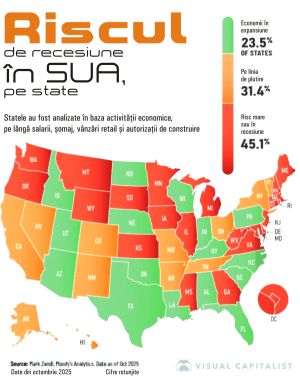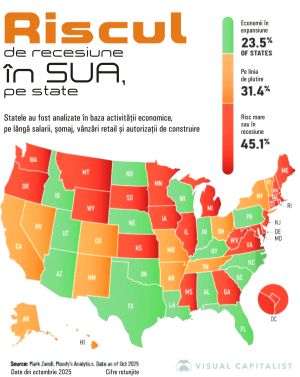After more than a year since military operations in Iraq have ended, the number of casualties grows each day by the dozens, while the intensity of actions and counter-actions is getting ever higher.
What is happening? Are we facing a war following another war? A war against those who initiated the military struggle? Another phase of an operation that didn't end with the fall of the Saddam regime? Another fight, with other fighters?
The answer to these questions is important not only in order to understand what is happening in Iraq, but also to draw the political lines able to stabilize the situation and to bring an end to the problem.
If the military operation of the international coalition ended successfully more than a year ago, why then does the military violence keep growing each day?
One answer to the question able to decide on the US and UK elections is: "the huge mistakes made by the coalition after the fall of the Saddam regime". The biggest one seems to be a planning mistake. The management of the post-conflict situation was approached merely in terms of an illusion. After the fall of the totalitarian regime nothing else can follow but democracy! The coalition forces will have to worry only for the parade expected to mark the victory of Good against Evil! The Iraqi people will take care of themselves and will start a new life! The economy will gradually shift towards normality and, with a little help, will become a major source for new social development programs in Iraq!
In fact, the military forces of the coalition faced an enormous task: to be, at the same time and at an ever higher degree, the military force, the police force, the public administration center, the border patrol, the ones looking for the former regime personalities and for WMDs, the source providing the population with a minimal security and basic necessities. Few could imagine, but it happened! The military forces which freed Iraq of dictatorship became the target of criticism, protests, sporadic violence and finally organized violence, coordinated from both inside and abroad.
This scenario explains what happened in the field and provides a simple solution, with two stages: forces in the field must be strengthened, both in number and in logistics, and the tasks of administration and the establishment of the domestic authority must be transferred to local authorities. This process should end on June 30 with the elections. This is the scenario chosen by the Bush administration, the scenario expected to manage the crisis. The main problem of this approach concerns costs:
- human lives, of British and American soldiers and officers, and of Iraqi civilians;
- financial: the budget of the Iraqi operations had to be recently increased by the US administration by more than USD 20 billion;
- political: failing to transfer authority equals the political failure of candidate Bush to the White House. He might become one of the "collateral victims" of the Iraq fight. Tony Blair might share the same fate, according to the latest surveys and to political reactions within his own party.
An alternative approach aiming to understand the Iraq events goes for another vision: the allies' military intervention in Iraq brought down the Saddam regime, but also created a huge "hunting field" where Americans and British soldiers are no longer hunters, but hunted - totally unprepared and unable to control the social and security environment of a nation still half-way between traditionalism and modernity. The allied forces could do nothing but watch powerlessly how a new player entered the game: those interested in the expansion of the "fundamentalist solution". Slowly but surely, the front of those betting for an American defeat (even after the initial success of the intervention) is getting stronger. The interests of those who see a long crisis in Iraq as an acceptable price for an "American defeat" are extremely different, from political to economical reasons. And the bet is extremely important:
- a new Islamic state in the hottest area of the world;
- a new field for terrorist-type guerrilla warfare;
- an ally in the anti-American camp in the middle of the Arab world;
- a democratic state amongst the totalitarian regimes of the Arab area;
- a pro-Western and pro-American regime;
- a field for the economic expansion for the Western world, or for the anti-Western forces.
Seen from this perspective, what happens in Iraq is nothing more than a fight for preeminence between three power centers in total conflict: the authority of the intervention forces, the civilian authority about to be established and the alternative authorities, of religious fundamentalist origin, directly related to global terrorist organizations.
The immediate consequence, no matter which angle, is only one: the chance of President Bush to become a political "collateral victim" of the Iraqi developments are growing with the political and managerial crisis in the field.
• The cement war to see a new factory in Brasov, up to USD 100 million
The price of cement is still subject to dispute between the Government and the international companies "Lafarge", "HeidelbergCement" and "Holcim". By the beginning of 2003, the Government suggested to the Competition Council to check on whether there is any possible agreement on cement prices between the multinationals. The Council was expected to make a presentation of its findings by the end of the year. The investigation was delayed until February 2004. Three more months have passed since that deadline. According to our sources within the Council, the report might be ready by the end of the next month. But the Prime Minister is lacking so much patience: he stated that the Ministry of Public Finance and the Competition Council should have a talk on the cement price, mainly in order to avoid higher prices on the domestic market. He added that the companies' profit must be taxed here, not elsewhere, and an urgent solution is required for this aim. Adrian Nastase explained that the cement market is strongly developing and prices might consequently increase.
Rumors on the market claim that the Government has a backup solution if the report of the Council will be favorable to multinationals: to support the project of a Brasov businessman, Mr. Ioan Niculaie, to build a cement factory in Brasov. "The Government might even provide guarantees for the loan taken by Ioan Niculaie for its project" - said our sources.
Ioan Neculaie, owner of "Prescon" Brasov, acknowledged that one reason to initiate this project is the high price for the cement produced in Romania by multinationals. "I am sure that cheaper cement can be produced in Romania and I want to show it" - he stated. According to him, the project needs at least EUR 100 million to be financed, but he denied any involvement of the Government.
On the other side, Mr. Mihai Rohan, president of the employers' association of the cement industry (CIROM), doubts that such low prices could be achieved: "the prices will be higher because the new factory should reimburse the loan". The CIROM president also stated that his organization would openly protest if the Government will get involved in this project. In addition, he declared, supposing the new factory will manage to have lower prices that Holcim, Lafarge and HeidelbergCement, the impact will be merely regional. The transportation of cement (very expensive) creates this situation of a natural monopoly for existing factories. Moreover, according to CIROM data, in spite of the increased demand for cement during the last years, most of the existing factories do not work at full capacity.
• A USD 250 million market
With a market estimated to approximately USD 250 million, the Romanian cement industry is divided, in almost equal parts, between three large international companies: "Lafarge" 34% (with "Lafarge Romcim"), "HeidelbergCement" 35% (with "Carpatcement") and "Holcim" 31% ("Holcim Romania"). The three multinationals are controlling, each, three cement factories. "Lafarge" holds factories in Medgidia, Tg. Jiu and Hoghiz. "HeidelberCement" has its factories in Deva ("Casial"), Bicaz ("Moldocim") and Fieni ("Romcif"). The "Holcim" Group owns the factories in Alesd, Turda and Cimpulung.
Cement production is fully privatized.
Representatives of the Ministry for Economy and Trade, the institution that analyzed the development of cement prices between 1996 and 2003, claim that the price on the domestic market (expressed in USD) increased by 2.7 times, while the price for exports dropped by 12%. The Competition Council is currently checking if such price increases on the domestic market could unveil anti-competitive practices.






















































